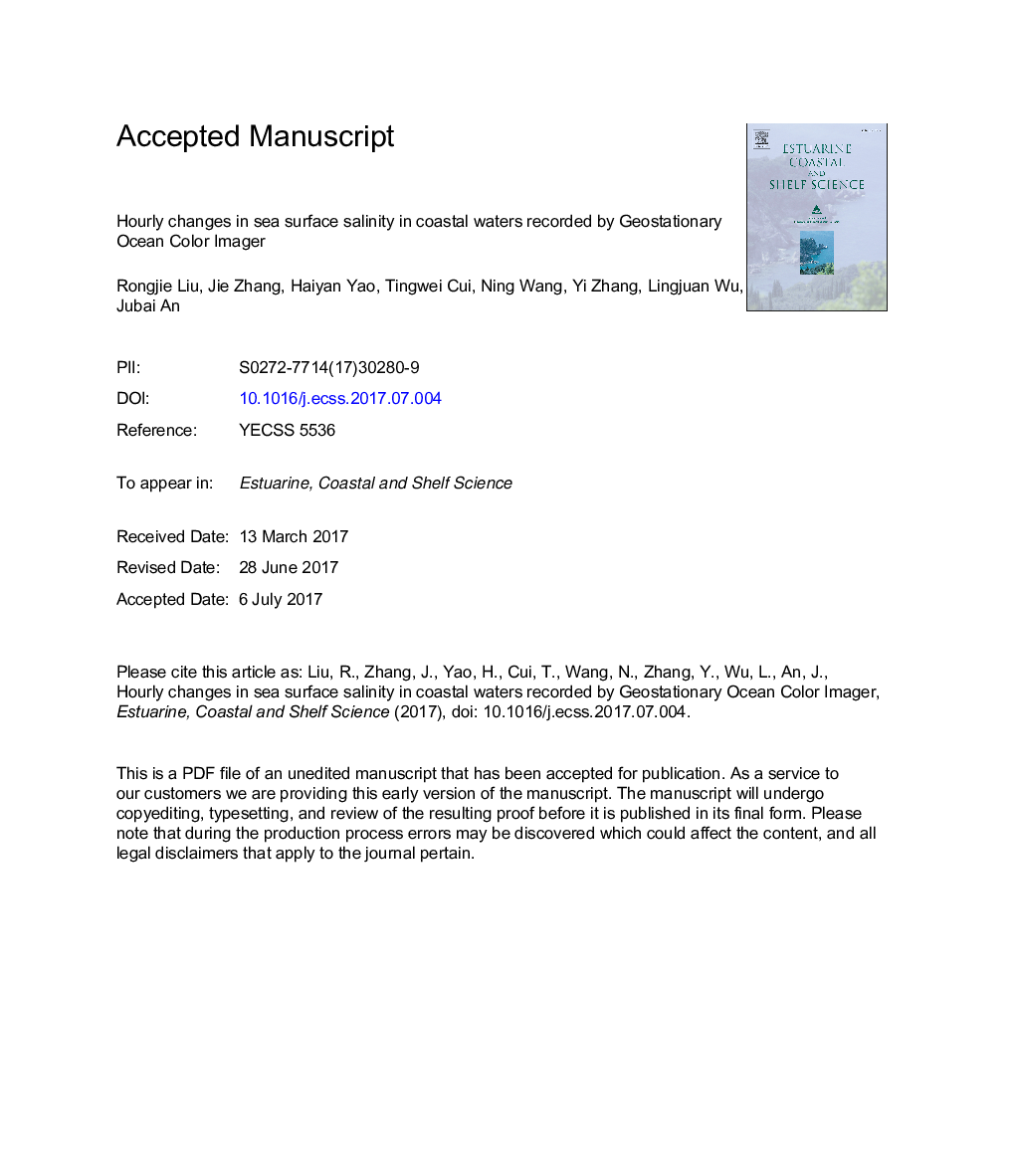| Article ID | Journal | Published Year | Pages | File Type |
|---|---|---|---|---|
| 5765138 | Estuarine, Coastal and Shelf Science | 2017 | 34 Pages |
Abstract
In this study, we monitored hourly changes in sea surface salinity (SSS) in turbid coastal waters from geostationary satellite ocean color images for the first time, using the Bohai Sea as a case study. We developed a simple multi-linear statistical regression model to retrieve SSS data from Geostationary Ocean Color Imager (GOCI) based on an in situ satellite matched-up dataset (R2 = 0.795; N = 41; Range: 26.4 to 31.9 psμ). The model was then validated using independent continuous SSS measurements from buoys, with the average percentage difference of 0.65%. The model was applied to GOCI images from the dry season during an astronomical tide to characterize hourly changes in SSS in the Bohai Sea. We found that the model provided reasonable estimates of the hourly changes in SSS and that trends in the modeled and measured data were similar in magnitude and direction (0.43 vs 0.33 psμ, R2 = 0.51). There were clear diurnal variations in the SSS of the Bohai Sea, with a regional average of 0.455 ± 0.079 psμ (0.02-3.77 psμ). The magnitude of the diurnal variations in SSS varied spatially, with large diurnal variability in the nearshore, particularly in the estuary, and small variability in the offshore area. The model for the riverine area was based on the inverse correlation between SSS and CDOM absorption. In the offshore area, the water mass of the North Yellow Sea, characterized by high SSS and low CDOM concentrations, dominated. Analysis of the driving mechanisms showed that the tidal current was the main control on hourly changes in SSS in the Bohai Sea.
Keywords
Related Topics
Physical Sciences and Engineering
Earth and Planetary Sciences
Geology
Authors
Rongjie Liu, Jie Zhang, Haiyan Yao, Tingwei Cui, Ning Wang, Yi Zhang, Lingjuan Wu, Jubai An,
